12 Best Cloud Based Productivity Apps to Boost Efficiency 2025
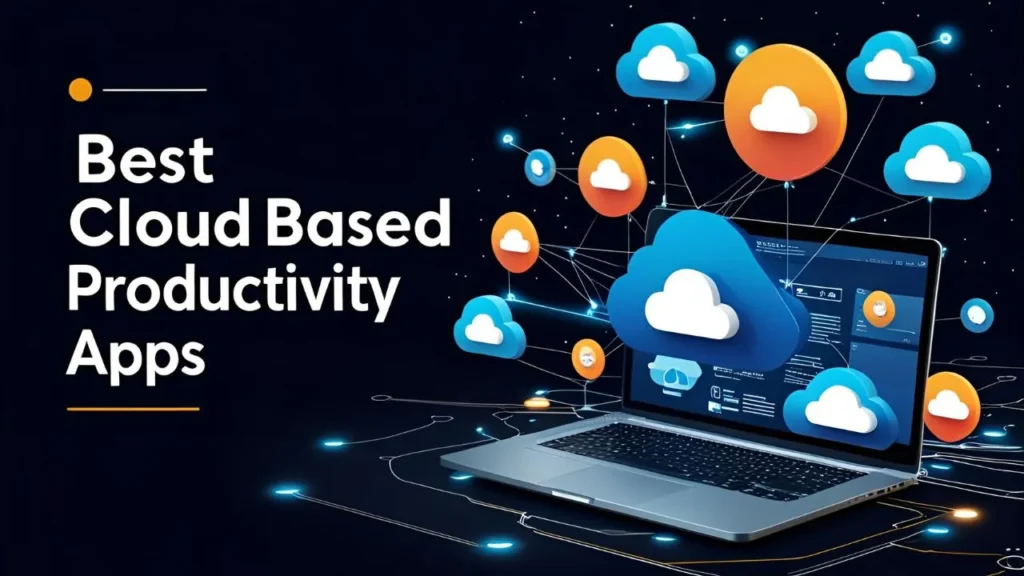
This online revolution has transformed the way we do business today, the way we work and collaborate and the way we handle business in a fast paced world. Cloud Based Productivity Apps have become the backbone of effective work in the contemporary offices, and aid in smooth collaboration across geographical locations. These new solutions have not only moved beyond the recommendation of the traditional desktop software, but have transformed into advanced web-based solutions providing real-time synchronization, higher security, and unparalleled accessibility.
The world is shifting to these tools in order to streamline the workflow, reduce operational costs and workforce productivity. It is a fact that the pandemic spurred this process because cloud-based solutions became the key to remote work effectiveness and business continuity.
What are Cloud-Based Productivity Apps?
The productivity apps are web-based applications deployed on remote servers that allow users to access, create, edit, share, manage documents, projects and communications through an internet connection. As opposed to conventional desktop-based programs, data in such applications reside in the cloud, thus can be accessed immediately, regardless of the device, as soon as the internet connection is available.
They have very diverse resources and comprise word processing, spreadsheets, presentations, project management, communication and storage software. Such applications use cloud computing infrastructure to offer collaborative, cost-effective and scalable work environments that are flexible to meet contemporary business demands and distributed work contributions.
Key Features of Cloud-Based Productivity Apps
Contemporary cloud based productivity applications have integrated interactive technologies to offer authoritative solutions to the changing workplace environments. These channels are user-friendly, and they have powerful functionality on different devices and operating systems.
- Real-time Collaboration: Document editing, provision as well as tracking of changes, and peer-to-peer feedback can be provided simultaneously and are instantly synched across any device in use.
- Cross-platform Compatibility: The apps are compatible with Windows, Mac, iOS, Android and on web browsers, making sure that all team members can access the apps everywhere.
- Automatic Backup: All information is constantly reviewed and saved in cloud servers, so there is no chance of losing any documents and a history of versioning is available.
- Scalable Storage: For growing data needs, the user can scale storage needs as needed, avoiding the need to replace hardware or incur high costs in its upgrade.
- Superior Security: Business-sensitive data is guarded against unauthorized entry and hacking efforts with a multi-factor authentication, data encryption, and data protection through regulatory compliance certification and audit reporting.
Benefits of Using Cloud Productivity Apps
The utilization of cloud-based productivity applications has transformational benefits which are not limited to the essentials. These gains redefine how organizations interact, operate, and compete in the marketplace across the world.
- Cost Effectivity: Removes costly software, license, hardware maintenance costs and IT system infrastructure costs and offers cost predictable subscription pricing models.
- Improved Mobility: Team members are able to have access to files, complete projects, and attend meetings regardless of their location, which is beneficial to flexible work setup.
- Better Collaboration: Online cooperation through real-time editing, comments, and distribution capabilities eliminate communication silos and shorten the time curve of project completion by many folds.
- Automatic Updates: New features and software updates can be distributed to users automatically, take the guesswork out of whether software is up to date and deploy security patches when they are available.
- Disaster Recovery: Disaster protection methods by backing up and redundantly placing data on the cloud safeguards against the losses of data due to hardware failures, natural catastrophes or inadvertent deletions.
Top 12 Cloud-Based Productivity Apps (2025 Edition)
For Businesses & Teams
1. Microsoft 365
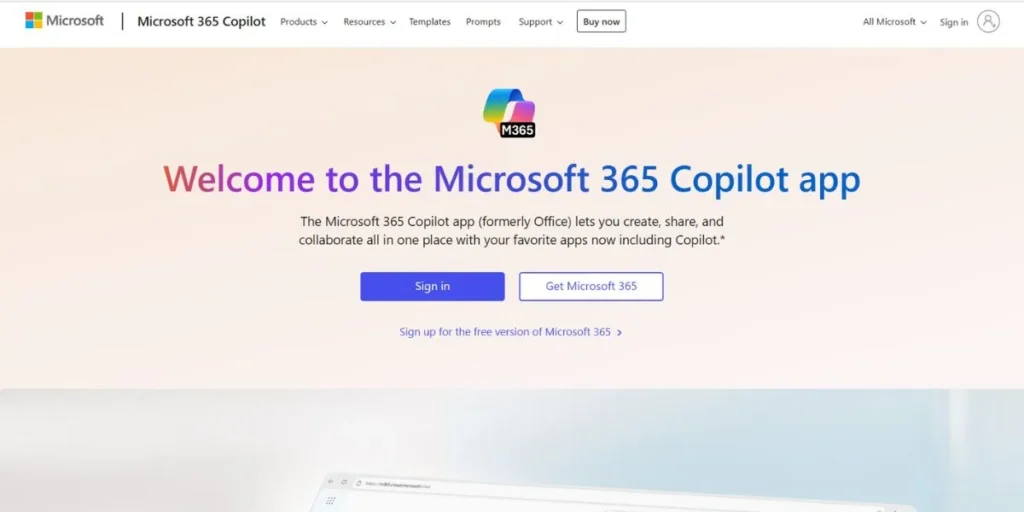
The enterprise cloud based productivity apps market remains dominated by Microsoft 365 that provides an array of business applications. This platform creates a combination of the known Office applicants and innovative cloud technologies, artificial intelligence tools, and comprehensive security systems. The ecosystem embraces word, excel, power point, outlook, Teams, OneDrive and Share point among others offering all rounded solutions to modern companies.
The ongoing AI functionalities development by Microsoft, especially with the use of Copilot capabilities, make workflows more efficient since the workload is reduced through the automation of repetitive tasks and smart recommendations. The security of this platform is enterprise grade, with up to date compliance certifications, and a wide range of third-party integrations, thus suitable to organizations that need comprehensive solutions to their digital transformations.
Key Features:
- Full set of Office, with cloud sync
- Unified communication Microsoft Teams
- High-end AI Copilot support
- Security and compliance on the enterprise level
- Wide-ranged third-party app integration
Pros:
- User friendly familiar interface
- Full business solution ecosystem
- Good enterprise security features
Cons:
- More premium feature cost
- Licensing structure is complex
- Advanced features high learning curve
Pricing: ₹ 8,199.00/year
Why Choose This App? Enterprise reliability
Website: https://www.office.com
2. Google Workspace
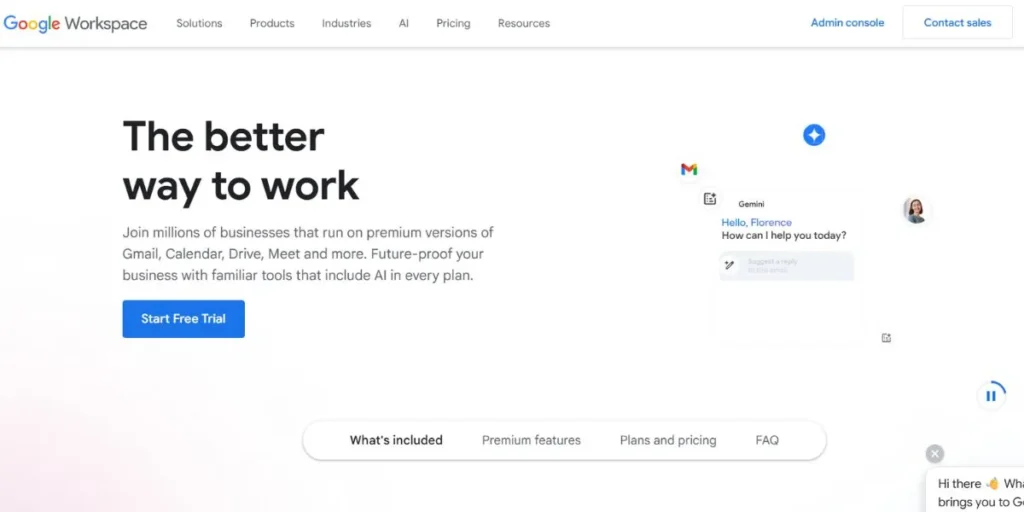
The enterprise cloud based productivity applications market remains dominated by Microsoft 365 that provides an array of business applications. This platform creates a combination of the known Office applicants and innovative cloud technologies, artificial intelligence tools, and comprehensive security systems. The ecosystem embraces word, excel, power point, outlook, Teams, OneDrive and Share point among others offering all rounded solutions to modern companies.
The ongoing AI functionalities development by Microsoft, especially with the use of Copilot capabilities, make workflows more efficient since the workload is reduced through the automation of repetitive tasks and smart recommendations. The security of this platform is enterprise grade, with up to date compliance certifications, and a wide range of third-party integrations, thus suitable to organizations that need comprehensive solutions to their digital transformations.
Key Features:
- Full set of Office, with cloud sync
- Unified communication Microsoft Teams
- High-end AI Copilot support
- Security and compliance on the enterprise level
- Wide-ranged third-party app integration
Pros:
- User friendly familiar interface
- Full business solution ecosystem
- Good enterprise security
Cons:
- More premium feature cost
- Licensing structure is complex
- Advanced features high learning curve
Pricing: ₹160.65 per user per month
Why Choose This App? Collaboration focus
Website: https://workspace.google.com
3. Slack
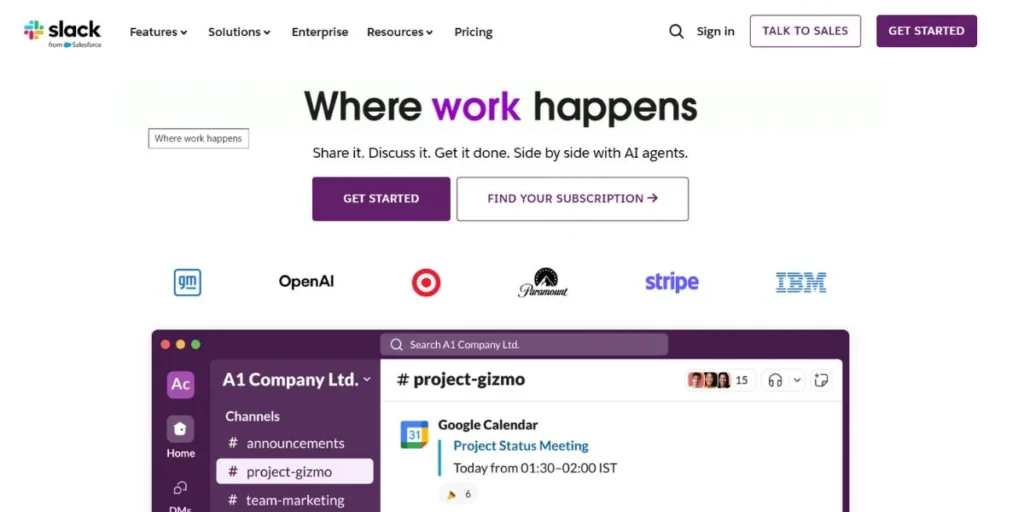
Slack has transformed how people communicate at work by establishing a hub of team activities which is more than a regular messaging system. This productivity apps solution is cloud based and chats are categorized into channels, which allows the organisation of conversations around projects, topics or teams. A great deal is done to connect with third party applications, with integrations to more than 2,000 external programs built into the platform to create a seamless working environment to minimize context hopping and streamline the working process.
The simple and easy to use list view of Slack, file sharing and automating workflow tools make it a must have tool in a remote and hybrid workforce. The focus on transparency and accessibility in the platform contributes to the development of stronger ties within a team and within an organizational culture.
Key Features:
- Structured channel based communication system
- Deep third party app integrations
- Search advanced and file sharing
- Automation with Slack Workflow Builder
- Video and voice calling facility
Pros:
- Excellent organization of team communication
- Strong integration ecology
- Interface design is user friendly
Cons:
- Notifications Can be too much
- Few video conferencing features
- Advantages of larger teams
Pricing: ₹245.25 per person per month
Why Choose This App? Communication excellence
Website: https://slack.com
For Project Management
4. Trello
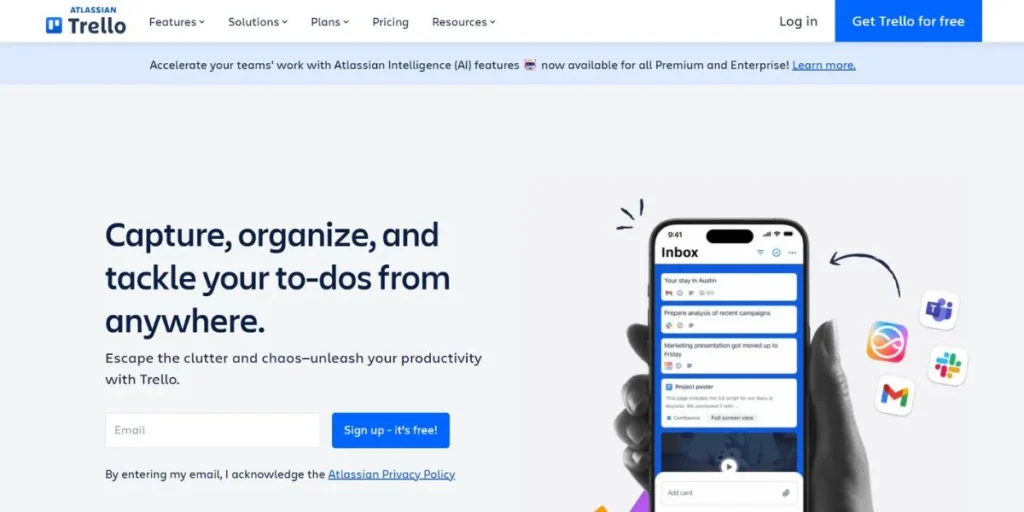
Trello was the first to introduce the visual project management format based on Kanban gantries in an easy-to-understand and scalable solution to projects of all formats. This cloud based productivity apps system visualises complex project workflows into boards, lists and cards which are easily understood by anyone. Trello makes it simple enough for a group of people to organize projects without having to devote significant amounts of time on learning the system and setting it up.
For Butler automation, which is available on the platform, users can create custom workflows to minimize manual efforts and introduce a level of consistency to the workload. Power-Ups add new features to Trello with the help of integration with other business tools and make project management in accordance to the needs of a particular team.
Key Features:
- Graphics Kanban board UI
- Butler automation on workflow optimization
- Power-Ups to add its functionality
- Tom teamwork and assignment functionalities
- Mobile applications on the move management
Pros:
- Very user friendly GUI
- Rapid deployment and set up
- Flexible system of project organization
Cons:
- Minimal reporting and analytics
- Limited features when used on complex projects
- Limited custom access
Pricing: $5USD Per user/month if billed annually ($6 billed monthly)
Why Choose This App? Visual simplicity
Website: https://trello.com
5. Asana

Asana achieves the ideal combination of minimalism and usefulness as it provides several project views in the form of lists, boards, timeline, and calendar. A flexible cloud based productivity apps platform, this is flexible enough to suit different project management methodologies without complicating its use. The goal setting and tracking of Asana offers alignment of the team practices with organizational goals and offers transparency in the progress and ownership.
The proofing functionalities of the platform speed up the process of creative reviews, whereas the templates and the custom fields allow consistency across projects. The capability to do advanced reporting and to manage portfolios is what makes Asana applicable in various projects, small and large enterprises that have complex portfolios.
Key Features:
- Several project display modes (list, board, chronology)
- Monitoring and following up progress Goal setting
- Projects templates and custom fields
- Advanced reporting and analytics dashboard
- Creative workflow proofing Proofs
Pros:
- Flexible project image presentations
- Great goal tracking features
- Full list of features
Cons:
- May be complicated on the straightforward projects
- Free version does not have much customization
- Advanced feature learning curve
Pricing: US$10.99 per user, per month
Why Choose This App? Balanced functionality
Website: https://asana.com
6. Monday.com
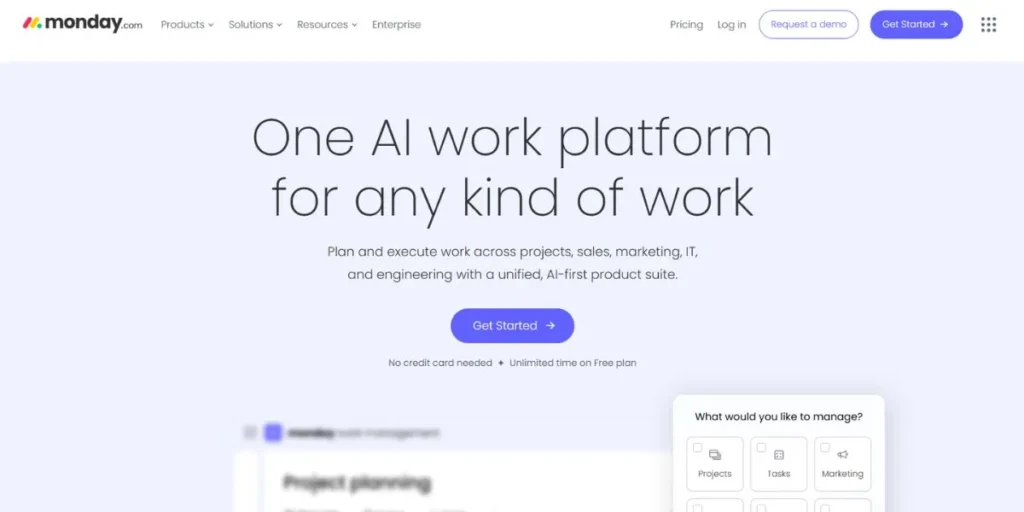
A new player on the scene, Monday.com has become one of the more popular work operating systems that does more than project management to provide a complete system to manage the workflow and team operating system. This productivity apps solution is a cloud based tool that enables highly customizable boards that can be used in multiple scenarios project management, CRM, marketing campaigns and HR processes. A visual representation of data is presented by the colorful and easy to navigate interface of this platform which makes it enjoyable and comprehensible by the entire team.
The automation feature of Monday.com can also help automate some of the manual processes by initiating actions when the status is changed, a due date or any other custom criteria. Incorporation marketplace and the API in the platform allow easy integration with any previous business tools.
Key Features:
- Extremely user defined workflow boards
- complex automation and integration
- Various data representations are available
- Resource management and time tracking
- Actionable reporting and analyses
Pros:
- Flexible interface settings
- Good automation skills
- Good visual representation data
Cons:
- Greater learning curve at first
- May prove costly on larger teams
- Difficult pricing model
Pricing: $9 per seat per month
Why Choose This App? Ultimate customization
Website: https://monday.com
For Note-Taking & Knowledge Management
7. Notion
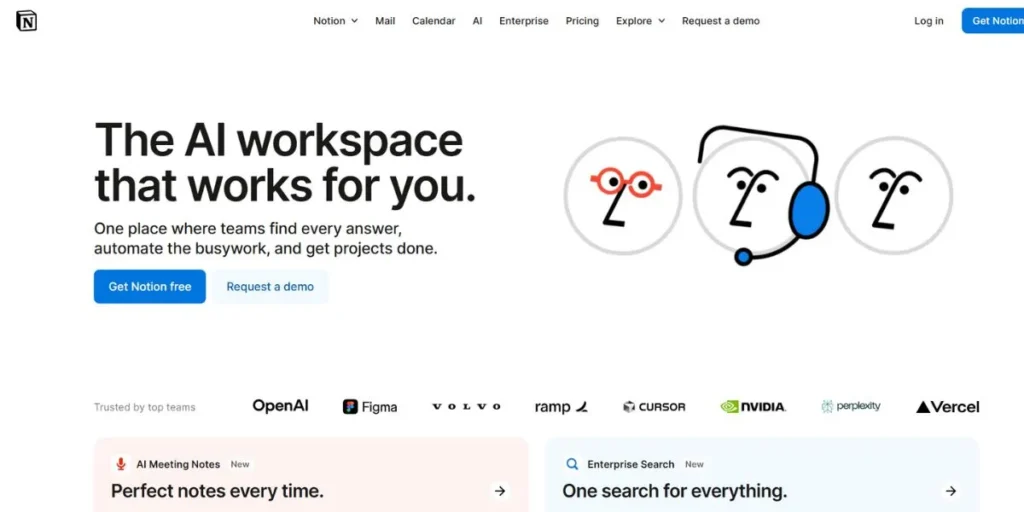
Notion has broken into knowledge management, reshaping it by bringing note-taking, database functionality, project planning, and team collaboration onto one platform. Hosted in the cloud, the productivity application works on a block-centric framework; its blocks act as the building blocks of the platform, letting users craft anything from simple notes to elaborate databases or project-management systems.
Notion’s template gallery provides ready-made solutions for frequent use cases, and its database tools deliver advanced data organization capabilities as well as relationship management. Its adaptability will appeal to individuals and teamwork alike, especially to those who wish to create tailored workflows while staying relatively non-technical.
Key Features:
- Block-based content creation system
- Integrated database with built-in relation management capabilities
- Extensive Template Gallery
- AI-powered assistance for both writing and organizing content
- Personalities of real-time collaboration
Pros:
- Completely adaptable and fully configurable
- A full featured workspace management solution
- Strong networking and versatile templates
Cons:
- A steep learning curve at the onset
- Functional latency can occur when handling extensive data sets.
- Mild formatting flexibility
Pricing: $10 per member / month
Why Choose This App? Ultimate flexibility
Website: https://www.notion.com
8. Evernote
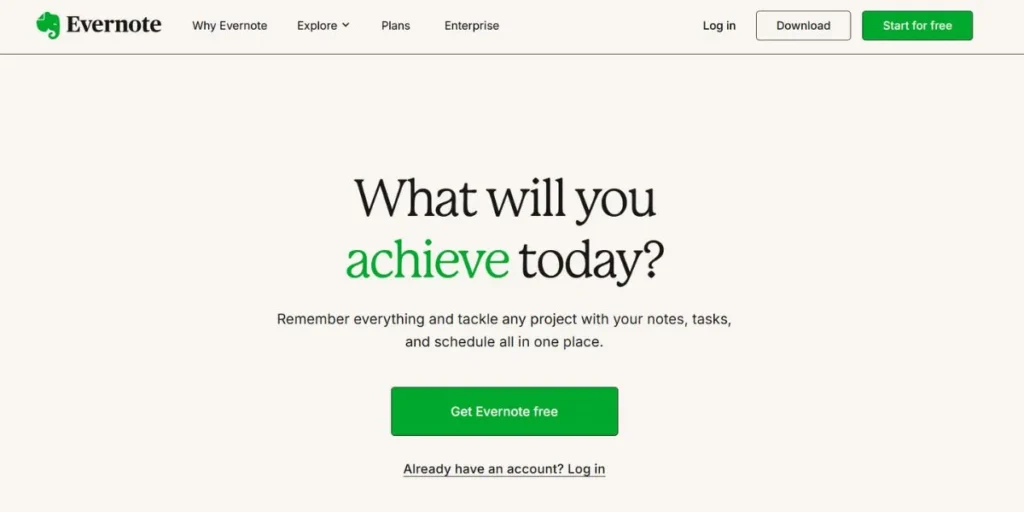
Evernote is a still powerful note taking and information organization platform that has the capacity to excel in capturing, organizing, and retrieving information on multiple formats and sources. This cloud based productivity apps solution has advanced search functions with the ability to identify text in PDFs and images as well as in handwriting. Web clipper browser extension makes it simple to clip articles, research and online contents directly to the organized notebooks using the service of Evernote.
The tagging feature, as well as the information notebook organization allow the user to have organized information repositories which grow as time goes by. New releases have enhanced collaboration options and interface usability, without detracting the powerful functionality that made Evernote a leader at digital note taking.
Key Features:
- Intelligent search across all the content elements
- Web clipper which helps in quick content collection
- Image OCR text recognition
- Powerful tagging, and organization mechanism
- Cross-platform synchronization
Pros:
- Excellent search and organization
- Well established and mature platform
- Hard capabilities in a tap of content
Cons:
- few formatting possibilities
- Junk interface design aspects
- Limited collaborative functions
Pricing: ₹333.25/ Month
Why Choose This App? Search excellence
Website: https://evernote.com
For Remote Communication
9. Zoom
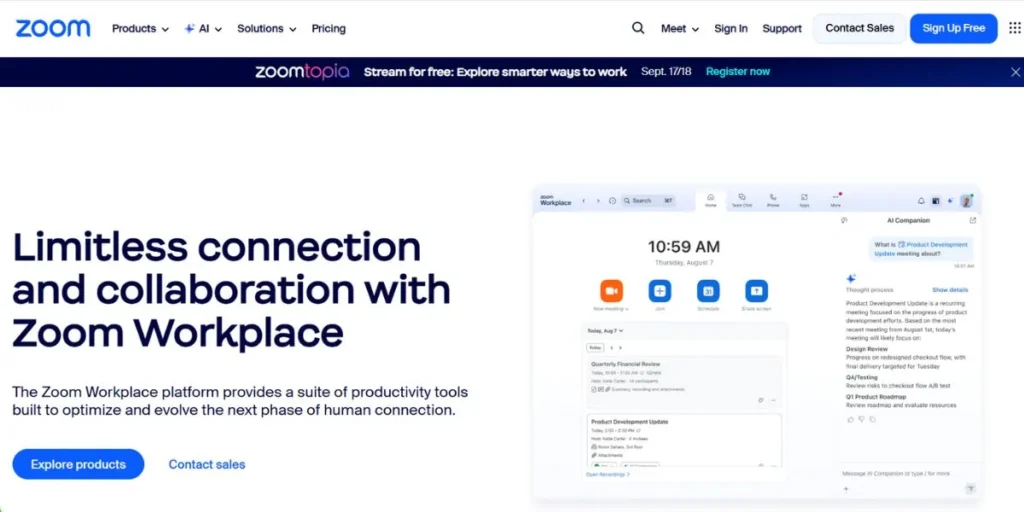
Zoom is now synonymous with video conferencing, and it has established itself as the standard resource when it comes to communicating with others remotely either personally or professionally. The productivity tool enables all users regardless of their level of technological expertise to access clear video and audio, excellent connectivity, and user-friendly interfaces that help them bring virtual meetings into reach.
The breakout rooms, screen-sharing features, the recording pack, and numerous selection of virtual backgrounds engender a meeting that provides parity to in-person meetings by an incredible degree of accuracy. The platform easily supports both one-on-one as well as webinars with thousands of attendees.
Key Features:
- Clear video and crystal-clear sound
- Break out rooms to promote small group discussions
- Screen sharing capabilities and built in annotation tools
- Recording meetings, including their recordings
- Background filters, as well as a variety of filters are included.
Pros:
- Excellent video/audio volume
- Easy to military interface design
- High and stable connection stability
Cons:
- Previously security concerns
- The free package contains a restricted number of features
- tap significant resources
Pricing: ₹1,147/month/user, billed annually
Why Choose This App? Video quality
Website: https://www.zoom.com
10. Google Meet
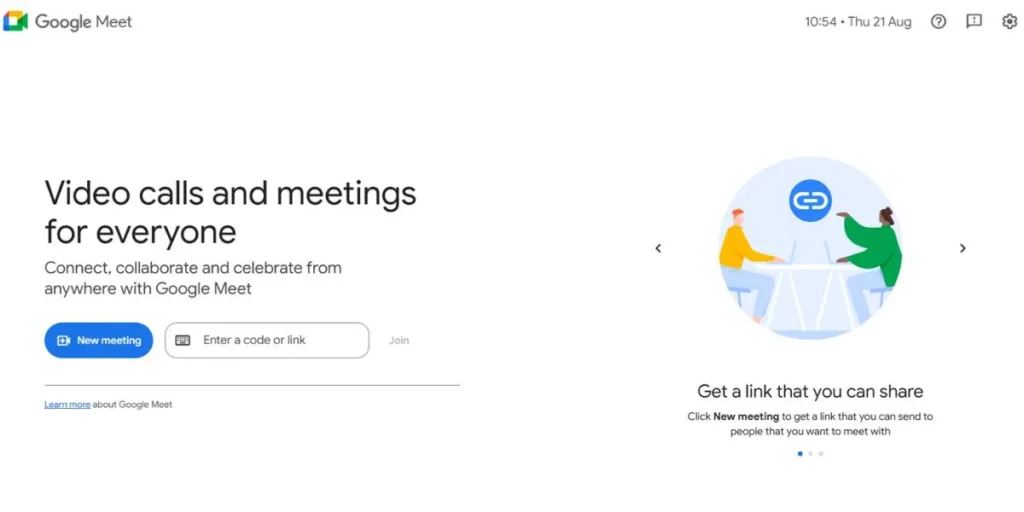
Google Meet has become a serious competitor in the video-conferencing market using the technological capability and accessibility of Google infrastructure and interoperability with Google Workspace tools. Through the focus on security and ease of use, the cloud-based productivity suite enables users to join meetings by simply clicking on calendar invites or emails in Gmail. The tight integration with Google Calendar, Drive and the rest of the Workspace tools provides users within the Google ecosystem with a consistent experience.
The adaptive video quality on the platform dynamically adapts to current network conditions, where consistent experience is assured regardless of the internet speed. Real-time captioning and translation services facilitate accessibility and on the other hand, perfects international cooperation.
Key Features:
- Perfect integrations with Google Workspace
- Dynamic video quality control
- Live transcription/translation.
- Support to accommodate large meeting capacity
- High level security and encryptions
Pros:
- Excellent integration with Google.
- Knowledgeable security functions
- Intelligent video quality control
Cons:
- Limited set of meeting capabilities
- You will need a Google account
- A diminished set of customization options.
Pricing: $6 per user per month
Why Choose This App? Google integration
Website: https://meet.google.com
For File Sharing & Storage
11. Dropbox

Dropbox has been the first to offer cloud file storage and as a result it stands today as the leader in straightforwardness and assurance in relation to team- and device-spanning file sharing and synchronisation. As one of the widely adopted cloud based productivity apps, this platform is cloud-hosted and it skillfully facilitates file access both online and offline. The Smart Sync on Dropbox feature allows users to see their entire files and only download the ones that they need, thus maximising their disk space. The platform that supports Dropbox Paper provides simple document-editing functionality, and integrations with common productivity tools enhance its status as the core location that teams collaborate in.
Key Features:
- Smart Sync to optimize storage
- Advanced file-sharing controls
- History of versions and recovery of files
- Teamwork areas
- Powerful suite of third party integrations.
Pros:
- Excellent file syncing
- Easy to use interface
- Reliability and a low downtime.
Cons:
- Poor collection of collaborative functions.
- Higher-cost per storage
- Basic document-editing functions are supported.
Pricing: $9.99 / month
Why Choose This App? Sync reliability
Website: https://www.dropbox.com
12. Google Drive
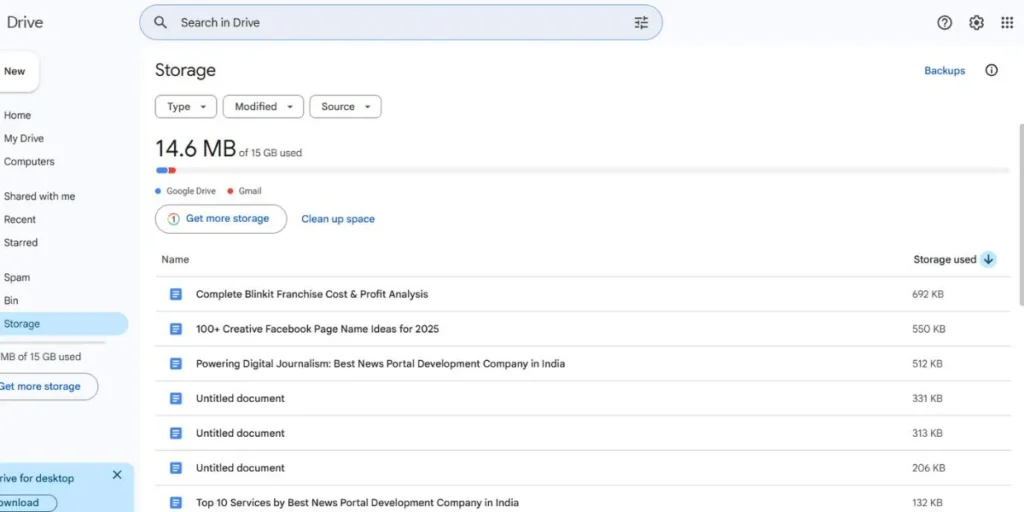
By smoothly using this cloud productivity system with Google Docs, Sheets, and Slides, it creates a perfect working environment where one creates as well as keeps his files. The sharing and collaboration features of Drive remain easy to use and extremely powerful, with fine-grained permissions and simple link sharing. Through the expertise in search that Google commands, the platform can easily find files by title, content or even the images that are contained within the documents. New functions include prior suggestions and workspaces, and allow users to navigate through and locate their important files as efficiently as possible.
Key Features:
- Close connection to Google Workspace
- Powerful search and categorizing
- Gives lots of free storage allocate
- Strong sharing and access rights.
- Automated file recommendation
Pros:
- Free Storage
- Great compatibility with an ecosystem of Google products
- Search tooling
Cons:
- Limited offline accessibility
- Some users possess privacy concerns.
- More restricted advanced enterprise functionality
Pricing: ₹15/mo
Why Choose This App? Google ecosystem
Website: https://drive.google.com/drive/quota
How to Choose the Right Cloud Productivity App
Determining the appropriate cloud-based productivity option to use in an organization requires the careful evaluation of several factors that are relevant to your organization and needs. This choice has a big impact on the productivity of a team, the effectiveness of collaboration, and the costs incurred in running operations in the long-term.
- Evaluation: Conduct an audit of unique workflow requirements, collaborative behavior, skills and expertise as well as the need to connect to existing business systems of your team.
- Budgeting: Consider both the one time subscription fee and long term costs, including user scaling, additional features, training and potential migration costs to move off of your current solutions.
- Scalability: The solutions should be able to adjust to the changing needs of your organization as you will be in a position to add more users, increased storage needs, and more features without necessarily disrupting business.
- Integration: Check with the platform whether it is compatible with the software stack you already have, has APIs that can be used to carry on with custom integrations, and has the ability to support the existing workflow during the migration.
Future Trends in Cloud Productivity Tools
Cloud-based productivity apps are becoming a reality driven by new technologies that are transforming the way work, collaborate and manage information. Such trends will drive the development of the future generation of workplace productivity solutions.
- Artificial Intelligence: AI-based solutions are going to provide Smart automation, predictive analytics, content generation and individual user experience which will refine to the unique thinking process of the particular individual.
- Enhanced security: Enhanced security will address the increasing concern of cybersecurity in remote working environments by implementing the zero-trust architectures and further deploying superior encryption and biometric authentication.
- Mobile Optimization: The apps will be more inclined toward mobile-first design with a perspective that incorporates voice commands, gesture controls and elements of augmented reality to enable smooth productivity on Android phones and tablets.
- Collaborative intelligence: Platforms will draw on the crowd-sourced knowledge of the entire team to suggest the most effective workflows, foresee project risks and automate suggestions to more effectively allocate resources.
- Sustainability Initiative: Green computing efforts will smooth energy consumption, reduce the scale of server installations and also provide carbon footprint surveillance to environmentally sensitive companies.
Conclusion
The introduction of cloud-based productivity suites has completely transformed the operation, collaboration and competitive law within organizations within the digital economy. These revolutionary platforms have now developed beyond mere repositories of files and into a holistic work environment that enables smooth distributed work, enhanced intelligent automation, and the scalable expansion of companies. Going forward, the combination of artificial intelligence, enhanced security solutions, and mobile-first design have the potential to drive innovation in this area.
With the implementation of these cloud-based productivity suites, organizations can gain significant competitive advantages as they increase efficiency, reduce expenses, and enforce team cooperation. It is only the future that awaits those enterprises that use these powerful tools to create agile, networked and highly productive work environments.
Frequently Asked Questions
What are the main advantages of using cloud based productivity apps?
Cloud based productivity apps provide real-time collaboration, automatic updates, device independence, cost-effectiveness, and enhanced security, and in every case outperform traditional desktop software installations.
How secure are cloud based productivity apps for business data?
Contemporary cloud based productivity tools implement corporate-grade protection techniques, including encryption, two-factor authentication, compliance certification, and regular security checks to ensure that sensitive data are secure.
Can cloud based productivity apps work offline?
Many cloud-based productivity suites have limited offline support, allowing users to edit locally on documents whose changes will be automatically synced when network connectivity is re-established.
What factors should businesses consider when choosing cloud based productivity apps?
A: Some factors to be considered include costs, security requirements, integratability, scalability, user experience, and collaboration tools as well as the extent to which they align with current workflows and processes of your organization.
How do cloud based productivity apps improve team collaboration and productivity?
Cloud storage of productivity tools enhances collaboration with the ability to edit documents in real-time, share files in an instant, centralize communication and project management, and access files and documents with ease using multiple devices and across different places.